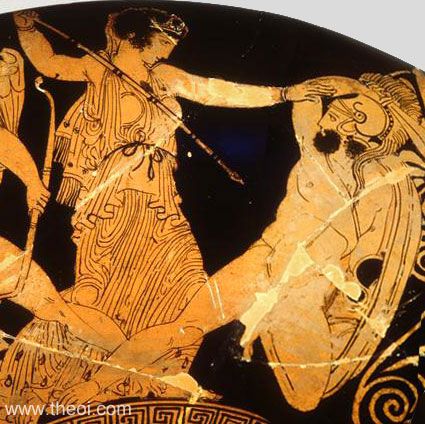ManishH wrote:
VII.40 In an incomplete pāda, the perfection (ie. the required no. of syllables) should be sought by means of a resolution (व्यूह) of semi-vowels as well as coalesced vowels.
====
v/s
====
XVII.22 In pādas which are incomplete, one should, for the sake of perfection, resolve the coalesced combinations
XVII.23 Conjuctions with semi-vowels, however should one separate by means of corresponding vowels
====
IOW, VII.40 says it should be pronounced tu-am But XVII.23 says it should be pronounced tu-vam. Both variations restore the syllable count.
First of all, it is VIII.40 (not VII.40). VIII.40 (and XVII.22) make a general statement that both routes of maintaining the meter are available.
XVII.23 also leaves open the question whether, after using the corresponding vowel, the semi-vowel should remain or not. If one decides to strictly retain the semi-vowel, then it should be "tuvam". Else "tuam". Same goes for "varenyam", which (if the semi-vowel is retained) becomes "vareni-yam" but is most commonly pronounced as "vareni-am".
The main point here is not the "ambiguity" in the pratishakhya. The main points are:
1)
One has a standard for comparison. We KNOW that the pada text is "tvam", and we KNOW for a fact that the rules allow both "tuam" and "tuvam" in metrical recitation.
2) Furthermore, there rules are not to be applied randomly. For instance, "jihvA" (discussed earlier with Shiv) remains so, and does not become "jihua" or "jihuva". This is a world of difference from other languages where there is no standard and no rules regulating any sound changes.
3) The "sound changes" created are so minor in comparison to what the linguists claim happen in PIE ---> Sanskrit/Greek/Latin etc, that trying to use the above metrical lengthening of words to illustrate "sound changes" in Vedic is really laughable.
Of course the so called fidelity of "oral reproduction" is often overrated and doesn't follow prātiśākhya at all.
A: The notion that an Indian receiving oral tradition in a traditional vedaśāla is somehow immune to sound change and corruption is wrong.
Who said it was immune and that it currently follows the pratishakhya in all cases ? I didn't say it, neither did anyone else in the thread. Did I not point out myself that the pronuncation of many Vedic practitioners (e.g., those in Kerala) is badly corrupted ?
I said it CAN BE immune to corruption
anytime one wants to make the effort, because
the standard is always available. There is no two ways about this. Please do not try to create straw men where there is no issue at all. Earlier you kept posting odd replies to me about the "divine" nature of the Veda, whereas in fact I was never talking about any such thing in the first place.
So is the notion that Ṛg is a revealed text whose meaning is not known. The reality is that sound change is a sub-conscious process that is increasingly getting better understood.
Sorry. Again, these attempts to claim "sound changes" in the RV will not go unnoticed and un-demolished. The very fact of existence of a standard and intelligible rules (even limited number of options) is indeed proof of sounds change NOT occurring, and not the reverse. Even in modern times the VAST MAJORITY of sounds in the RV are pronounced correctly in India, and whatever errors have crept in can be corrected anytime
by reference to the standard.
And Ṛg is of-course man-made verses out of a language that was already spoken. Natural elements (The Universe) of course inspired it (as gāyatri says - dhiyo yo naḥ pracodayāt).
Complete nonsense. None of the words in the RV by themselves betray any sign of human composition. It it the human mind which assigns such possibilities. The quality of knowledge obtained from such assumptions is dependent on the quality of the assumptions. In the case of "human authorship" of the Veda, we can plainly see the horrendously poor quality of knowledge obtained by various quacks. The meaning of the Veda is first and foremost in the correct reproduction of sounds. If you do not get this elementary fact, what should I say any further?
Also wrong is the notion that a western scholar is somehow dumb and cannot provide insights into vedic texts just because he is not an Indian. I prefer to criticize ideas and theories, not the origin and ancestry of people who propound them.
Again, creating straw men. It is not a question of a "western scholar being dumb". The question is, is the "western scholar" just reading the Veda from a text and thinking they are making some great discoveries, instead of actually hearing the Veda and reproducing it ? The former effort is indeed "dumb" and there are no insights to be obtained there. It would also apply to any Indians who are trying to do the same thing. Where does ancestry and origin come in here ?
KL


